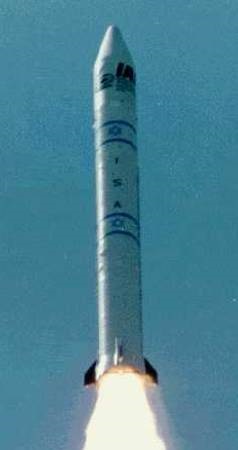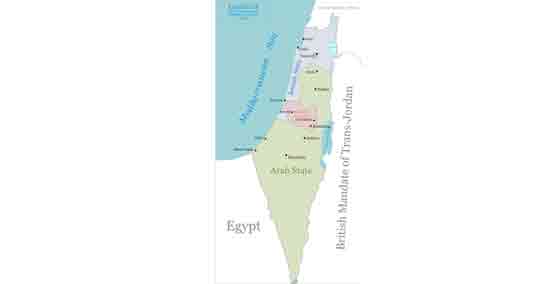In modern times of science and technology, Space Science has extraordinary importance attached to it. No one can deny that the future belongs to the countries which will achieve space superiority. Taking the fact into consideration, Israel too has been at the forefront of space science conquering its new domains.
Israel stepped into the field of space science and research at the start of the decade of the 1960s. Then, the ‘Israel Academy of Sciences and Humanities’ advised the Israeli government on the matters concerning science and technology. Under the auspices of this organization, the Israeli government formed the ‘National Committee for Space Research’. It was a university-level committee which had several university professors, experts and researchers from the field of space science research as its members. In the beginning, the committee was tasked only to formalize and coordinate between the various research works ongoing at several universities. This committee later went on the become today’s ‘Israel Space Agency’, the national space science and research body of Israel.
It was the time of the ‘Cold War’ between the two global superpowers, the United States and the Soviet Union. The war was assuming alarming proportions day by day.
However, more than Cold War, Israel worried about the acts by its neighbouring enemy nations. It was during the time that Israeli intelligence got an inkling about Egypt preparing to get armed with missiles from the Soviets. Israel also received the information about Egypt having roped in some German engineers for the purpose. During 1961, Egypt had plans in place to use their ‘Revolution Day’, the 23rd of July, to parade its missile might before the world. One of the objectives of the exercise was to instill fear in Israel.

When the news reached then Israeli Prime Minister, David Ben-Gurion, he called for an emergency meeting of all the concerned defense officials and researchers. He wanted to know whether Israel could launch its own rocket before Egypt. It was within just a few weeks following the meeting, Israel developed its first, a completely indigenously made, two-stage rocket – ‘Shavit 2’. It was successfully launched on 5th July 1961. Israel had not only outwitted Egypt but had also demonstrated its capabilities in the field before the world. With it, Israel joined select few nations with such competency.
During the decades of the 1960s and 70s, research continued along with infrastructure building for R&D in space science. However, the Israel government had by now realized that apart from exploring the space, they had to use space science and research to bolster the nation’s military capabilities. The realization became starker, especially after the ‘Yom Kippur War’ of 1973. Even before it, during the ‘Six-Day War of 1967, it had become difficult for Israel to conduct air surveillance sorties near the borders with Egypt and Syria. They had become necessary for Israel’s defense after the two neighbours had adopted an aggressive strategy.
By the time, many developed countries had begun using very robust satellites in the place of reconnaissance aircraft. However, as Israel did not have its own satellite, it had to depend on these nations for ‘satellite intelligence data’. Many times, the data would arrive late or be of inferior quality. During the 1973 war, the intelligence on enemy maneuvers received by Israel was neither timely nor what it had desired. Moreover, it was even erroneous. However, at the same time, Israel’s enemies, the Arab nations regularly received pin-pointed satellite imagery from the Soviets revealing the movements of Israeli forces.
Considering all this, Israel realized the futility in relying on others, especially for geospatial intelligence concerning military use. The Israeli military officials and scientists believed that there was no other alternative for Israel but to purchase a satellite or build one. Accordingly, a proposal was placed before the then Prime Minister Menachem Begin. Though the proposal was agreed in principle, work on it did not start immediately as the year 1979 saw the Iranian Revolution. Iran’s Pahlavi dynasty, which had till then helped Israel militarily as well as financially, was overthrown and Iran snapped cooperation with Israel. Consequently, the Israeli defense establishment faced a fund crunch. As a result, it became impossible to undertake any new project.
Amid all these events began the decade of the 1980s. The ‘Israel Space Agency’ was formed in 1983. This national agency under the Ministry of Science and Technology was tasked to fast pace the Israeli space program. The agency benefitted from the infrastructure that was built over the last 20 years by the ‘National Committee for Space Research’.

One of the main functions of the agency is to see how any research into space science will augment the Israeli economy and benefit Israeli people. For it, the agency acts as a link between the industry and researchers in Israel. The agency is also responsible to expanding cooperation in the field with other nations. The agency cultivates an interest in the young generation for space science to nurture future scientists for the country. Novel projects and national competitions are organized at schools and colleges for the same. The agency develops infrastructural facilities at educational organizations and research institutions. It develops-builds multipurpose satellites and uses them for the nation as well as provides paid services to other countries. The agency also invests in startups which manufacture various components and spare parts needed by it. The investment provides the necessary stimulus to the startups.
In 1988, the Israel Space Agency launched the ‘Ofeq 1’ satellite into space. The launch put Israel into a club of select few nations along with the United States, Russia, United Kingdom, Japan, India, France and China with indigenous launch capabilities. From then till now, Israel has launched diverse types of satellites like observation satellites, spy satellites, agriculture satellites, etc.

To reduce the manufacturing costs at the same time to maintain the high capacity of satellites, the agency has given a thrust to the search for new materials so as to reduce their size and weight. The ‘miniature satellites’, including the microsatellite and nanosatellites, that come with low mass and cheap cost, but high capacities are looked upon across the world as specialities of the Israeli space science research. They are in great demand across the globe. In 2017, the record-breaking launch by India’s space agency, the ISRO, in which it sent 104 satellites into space in one go, also had an Israeli nanosatellite among the others.

Also, ‘Ilan Ramon’, the only Israeli astronaut, was a part of the ‘Columbia’ mission sent to the International Space Station by the US space agency, the NASA. However, while returning to the earth after successfully completing its mission, the space shuttle caught fire and was destroyed. Ramon did not survive the accident. Besides, in 2019, Israel also undertook a moon mission.
This is all about Israeli space science and research which is taking Israel to the new heights of science and technology. (To be continued…)



















